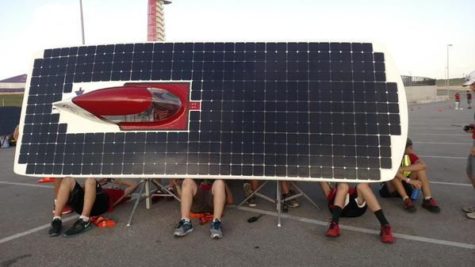Iowa State seeks proposals for water nutrient reduction research
July 27, 2015
The City of Ames may have made a horrible video about the quality of drinking water in the city, but ISU researchers are trying to make the water better for everyone.
The College of Agriculture and Life Sciences has narrowed down research proposals for tracking water quality and nutrient practices. The project is also being supported by the Iowa Department of Agriculture and Land Stewardship and the Department of Natural Resources.
“The call for proposals was to submit ideas of how they would go about doing that,” said John D. Lawrence, associate dean and director of extension and outreach. “What we were really looking for was concept and capacity.”
The proposals are centered around they measuring the changes occurring on the land and are only one part of a bigger strategy put together to reduce the loss of nutrients into water sources, he said.
“[They] developed this strategy by which farmers would adopt these practices proven in through science to reduce the loss of nitrogen and phosphorous [and] cities would implement technology to remove nitrogen and phosphorous from their waste streams before it goes downstream,” Lawrence said.
The Iowa Nutrient Reduction Strategy addresses nitrogen and phosphorous leaving the state and heading to the Gulf of Mexico, he said.
“The funds come to Iowa State University and the College of Ag and Life Sciences to develop the statistical model by which we can sample individual fields and be able to say something meaningful about the state or a region based on the sampling,” said Lawrence, “But we have to work with a private sector to collect the data, warehouse the data and then give it back to us in an aggregate form, so we can look at it either by the whole state or a region and tell [whether] changes [are] occurring or not.”
Before water nutrient reduction can happen, farmers and municipality treatment facilities must make some changes, Lawrence said.
“Before we would see that, we would have to see a change in human behavior- farmers’ knowledge and attitude [and] agri-business partnership,” he said.
The nutrients can come from point sources such as water treatment facilities or factories or non-point sources such as farm fields or communities.
“Our science assessment would show approximately 90 percent of those reaching surface water are due to non-point source, or basically agriculture,” said Lawrence, “In large part because nitrogen and phosphorous are absolutely necessary to grow crops. While much of it is native in the soil… we also add it in the form of fertilizer.”
The loss of nutrients from the soil is due to the movement of water.
“Nitrogen tends to move with water as it moves down through the soil profile, so it may start out at the surface or the top few inches, but if it starts raining and the water’s going down through the soil, the nitrogen is attached to it and if there’s not a root there to pick it off, it just keeps going,” Lawrence said. “Most of the phosphorous moves attached to soil particles… when it rains, you get erosion and it tends to move across the top of the land.”
With a high loss of nitrogen into the water, both the young and old are at risk.
“I don’t think anybody expects distilled water quality with zero nutrients, but it’s when they’re in excess that they are problematic,” said Lawrence. “The drinking water standard for nitrates set by the Environmental Protection Agency says that if you’re above ten parts per million in your drinking water… then that’s a potential risk for very young, …very old or immune suppressed- so vulnerable populations.”
Phosphorous is a problem in algae blooms, rather than health issues, said Lawrence.
“If you get this green gunk in the water, chances are it’s caused by a nutrient imbalance, and often phosphorous is the cause. Certain types of bacteria in that setting can be toxic to animals,” he said. “Certainly, it’s not good to swim in [and] humans don’t want to drink it, and so it’s more of a local challenge, but it also contributes to the hypoxic zone.”
It is the job of water municipalities in the state to treat water to keep it under the ten parts per million standard. It has become much more of a challenge for the Des Moines Water Works the past few years, Lawrence said.
“They draw largely from water from either the Des Moines River or Raccoon River or in their alluvial flood planes. The levels coming downstream have been above ten, so they’ve had to treat the water,” said Lawrence. “They tend to find a lower source, so if one river is high, they’ll go to the other river and blend it, but if they can’t do it that way, then they have a chemical treatment system in which to clean the water.”
With the loss of nutrients into the water being a danger to the vulnerable, it is important to find a way of keeping the nutrients in the soil.
“Our strategy and these practices we talk about on the land are things that try to keep the nutrients on the land,” said Lawrence.
The difficult part for Iowa State will be measuring progress and dealing with the farmers’ confidentiality.
Farmers involved in the research will need oversight to make sure they are following the contract and the strategy, Lawrence said.
“It’s a delicate balancing act because of confidentiality of the farmers’ data,” said Lawrence. “That’s why it’s a public-private partnership.”
While farmers are not required to participate in strategies to prevent nutrient loss, it is a necessity that can’t be dismissed, Lawrence said.
“This is a voluntary program, it’s not regulation,” he said, “But choosing to do nothing is not an option.”















